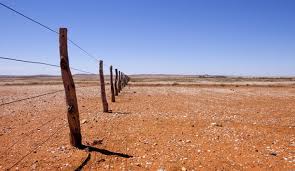Archives
Beware the Burst: How Flexible Water Hoses Can Flood Your Cupboards and Damage Your Home
A Cautionary Tale from The Lone Drainer
G’day, readers! The Lone Drainer here with another tale of caution for homeowners. Today, I’m shining a spotlight on those sneaky flexible water hoses hiding in your kitchen, bathroom, and laundry cupboards. These pesky hoses are just waiting for the perfect moment to unleash chaos.

The Real Threat: Burst Water Hoses in Your Kitchen, Bathroom, and Laundry
Picture this: You’re having a good laugh with your mate, chatting about the latest stand-up gigs, when suddenly, disaster strikes! You’re knee-deep in water, and it’s not from a leaky tap – it’s a burst water hose in the kitchen cupboard! Crikey! Your mate’s floor is quickly turning into a swimming pool, faster than you can say “water damage.”
Unexpected Floods: From Comedy Gigs to Courtrooms
But it’s not just comedians feeling the sting of a burst hose. Our pal, the Supreme Court judge, might be laying down the law in the courtroom, but even they can’t escape the watery wrath of a burst hose. Imagine the scene: legal documents soaked, gavels floating, and a whole lot of drama – and not the courtroom kind!
Stress and Soaked Floors: A Psychologist’s Nightmare
And let’s not forget about our psychologist mate. After a long day of helping others manage their stress, they come home to find their laundry cupboard flooded, and stress levels skyrocketing! A burst water hose can turn your peaceful home into a breeding ground for anxiety faster than you can book your next therapy session.
How The Lone Drainer Saves the Day
But fear not, folks! The Lone Drainer is always here to save the day. With a quick fix and a few choice words, those pesky burst hoses are sorted quicker than you can say “flood damage.” No more swimming in your kitchen or battling with waterlogged floors!
Preventing Water Damage: Why You Should Check Your Hoses Today
Now, here’s the kicker. Those burst water hoses can do more than just soak your kitchen floor – they can cause serious damage to your beautiful timber floors, warping them into a soggy disaster. And don’t even get me started on the inconvenience of having to move out while repairs are done. So, next time you’re having a yarn with your mates, spare a thought for those flexible hoses hiding in your cupboards. They might just be plotting their next soggy surprise!
Remember, The Lone Drainer is always on call, ready to keep your homes as dry as a dingo in the desert. Don’t wait for disaster to strike – check those hoses today and avoid the headache of water
Flexible Water Connections and Insurance claims.
G’day, Sydney homeowners! It’s The Lone Drainer and Pronto here, back with a crucial message that could save you from unexpected financial setbacks. We’ve been plumbing superheroes for years, and today we’re here to talk about a growing issue – home insurance claims being denied due to a lack of periodic plumbing checks on braided stainless steel hoses.
You might be thinking, “What’s the fuss about insurance claims and plumbing checks?” Well, let us break it down for you.

In recent times, we’ve seen an alarming trend in the insurance industry, with some companies rejecting water damage claims because homeowners haven’t had licensed plumbers carry out periodic checks on these braided stainless steel hoses. It’s becoming a ticking time bomb for homeowners, and here’s why you should take it seriously:
- Insurance Denials: If your plumbing hasn’t been regularly inspected by a licensed plumber, your home insurance provider may use that as a reason to deny your claim in the event of water damage. That means you’ll be left to cover the expenses out of your own pocket.
- Preventable Disasters: Bursting hoses are a leading cause of water damage in homes. Periodic checks by licensed professionals can identify weak hoses before they burst, preventing potential disasters and costly repairs.
- Safety and Peace of Mind: Regular plumbing checks not only safeguard your home but also ensure your family’s safety. Water damage can lead to health hazards like mold and mildew, which pose risks to your loved ones. Knowing your plumbing is in good shape brings peace of mind.
So, what can you do to avoid these insurance claim rejections and protect your home and family?
- Schedule Regular Plumbing Checks: Ensure you have a licensed plumber inspect your flexible water connections periodically. This simple step can save you from potential financial losses.
- Document the Inspections: Keep records of these inspections, including the plumber’s report, to provide proof to your insurance company in case of a claim.
- Stay Proactive: Don’t wait until a disaster strikes. Regular maintenance and checks can prevent costly plumbing emergencies.
At The Lone Drainer and Pronto, we understand the importance of periodic plumbing checks. Our licensed professionals are ready to help you safeguard your home and keep your insurance claims secure. Don’t let your hard-earned money slip away due to a technicality – be proactive and ensure your plumbing is in top-notch condition. We’re here to assist you every step of the way!
World Water Day 2024
Living in Sydney Australia we have water on tap.
Fresh water to drink. Clean water to cook with. Even fresh clean drinking water to flush the toilet.
And, if we don’t, we have great plumbers like The Lone Drainer and Pronto to find out why, and return the status quo.
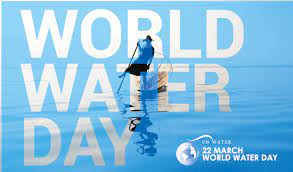
If you didn’t know, March 22nd 2024 is World Water Day. Its a day to consider the billions of people worldwide who have never had potable water dispensed from a tap.
So, how does that affect you dear reader? Well it doesn’t!
Unless we are to venture to parts of Asia, Africa and some parts of Australia and the Americas and the oceans in between us for exotic getaways where the local residents just don’t have fresh water to use the way that we do.
There are several things we can do to draw attention to the plight of those who don’t have access to fresh drinking water:
- Share information: Spread the word about the global water crisis by sharing information about it with your friends, family, and social media networks. Raise awareness about the issue and the impact it has on people’s lives.
- Support organizations: There are many organizations that work to provide clean water to people in need. Consider supporting these organizations by making a donation or volunteering your time to help with their efforts.
- Advocate for change: Write to your local representatives and urge them to support policies that prioritize access to clean water. Use your voice to advocate for change and push for action on this critical issue.
- Reduce your own water consumption: By conserving water in your daily life, you can help reduce the demand for freshwater resources and lessen the strain on those who don’t have access to it.
- Take action on World Water Day: Participate in events and activities that are organized around World Water Day to draw attention to the issue and show your support for those who are affected by the global water crisis.
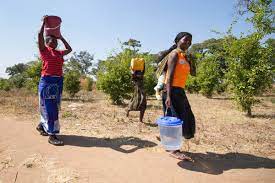
By working together to raise awareness about the issue of water scarcity, we can help ensure that everyone has access to this basic human right.
Love your Plumber on World Plumbing Day 2024
G’day, it’s The Lone Drainer and Pronto here to tell you why World Plumbing Day, Monday March 11th 2024, is worth celebrating!
Take a quick look behind the scenes at our Coogee plumbing HeadQuarters to see how we celebrate every day.
It can be a lot of fun showing up for our clients daily.
We prepare ourselves and our equipment and load up materials before coming out to see you at your home or business.
But, you won’t see us giving Plunger a rubdown, sweeping the floors, making everything spic and span.
Checking on all our high-pressure drain cleaning equipment to see it’s in tip-top condition to easily fix your blocked drains.
We’ve got drain cleaning equipment for every situation.
You won’t see us reviewing footage from the inside of your sewerage pipes to find out precisely what’s going on, or working on some entertaining and educational blog posts just like this, our specialty.
We bring a variety of parts to fix your taps and toilets, and what we don’t have, we’ll get pretty quickly. You won’t see us stacking mountains of toilet paper, just in case you need it.
We bring loads of equipment to the job, just for you, and when we show up at your place, you won’t know we’ve come from our plumbing HQ here in Melody Street, Coogee.
P.S. Take another minute and watch a few scenes from The Cutting Room
But seriously, plumbing is an often forgotten, but critical component of our modern society that many people take for granted. Plumbing allows us to access clean water, safely dispose of waste water, and maintain hygiene and sanitation in our homes, workplaces, and public spaces. Without plumbing, our daily lives would be much more difficult and unhygienic.
Secondly, World Plumbing Day provides an opportunity to raise awareness about the importance of plumbing and the role that plumbers play in maintaining public health and safety. It’s a chance to recognize the hard work and dedication of plumbers, who often work in challenging conditions to ensure that your plumbing systems are working properly.
Finally, World Plumbing Day is an occasion to promote sustainable plumbing practices and technologies that can help conserve water, reduce energy usage, and minimize environmental impact. As plumbers, we have a responsibility to ensure that our work is not only effective but also sustainable and environmentally friendly.
So, let’s raise a toast on World Plumbing Day and all the great plumbers out there who keep your plumbing systems running smoothly and our communities healthy and safe!
And, as we say in Australia, “‘ave a good one”!
Flexible Water Connections and Insurance claims.
G’day, Sydney homeowners! It’s The Lone Drainer and Pronto here, back with a crucial message that could save you from unexpected financial setbacks. We’ve been plumbing superheroes for years, and today we’re here to talk about a growing issue – home insurance claims being denied due to a lack of periodic plumbing checks on braided stainless steel hoses.
You might be thinking, “What’s the fuss about insurance claims and plumbing checks?” Well, let us break it down for you.

In recent times, we’ve seen an alarming trend in the insurance industry, with some companies rejecting water damage claims because homeowners haven’t had licensed plumbers carry out periodic checks on these braided stainless steel hoses. It’s becoming a ticking time bomb for homeowners, and here’s why you should take it seriously:
- Insurance Denials: If your plumbing hasn’t been regularly inspected by a licensed plumber, your home insurance provider may use that as a reason to deny your claim in the event of water damage. That means you’ll be left to cover the expenses out of your own pocket.
- Preventable Disasters: Bursting hoses are a leading cause of water damage in homes. Periodic checks by licensed professionals can identify weak hoses before they burst, preventing potential disasters and costly repairs.
- Safety and Peace of Mind: Regular plumbing checks not only safeguard your home but also ensure your family’s safety. Water damage can lead to health hazards like mold and mildew, which pose risks to your loved ones. Knowing your plumbing is in good shape brings peace of mind.
So, what can you do to avoid these insurance claim rejections and protect your home and family?
- Schedule Regular Plumbing Checks: Ensure you have a licensed plumber inspect your flexible water connections periodically. This simple step can save you from potential financial losses.
- Document the Inspections: Keep records of these inspections, including the plumber’s report, to provide proof to your insurance company in case of a claim.
- Stay Proactive: Don’t wait until a disaster strikes. Regular maintenance and checks can prevent costly plumbing emergencies.
At The Lone Drainer and Pronto, we understand the importance of periodic plumbing checks. Our licensed professionals are ready to help you safeguard your home and keep your insurance claims secure. Don’t let your hard-earned money slip away due to a technicality – be proactive and ensure your plumbing is in top-notch condition. We’re here to assist you every step of the way!
51 Reasons to Love Your Plumber

Last week we made another blood donation at the LifeBlood mobile donor caravan at Coogee Oval.
During a few moments of contemplation while some of the good stuff was taken from my left arm, I had this realisation.
Its nearly September 30th 2023, and with the Australian summer and the Christmas holiday season and the end of the year only 92 days away, here’s 50 more reasons to love your plumber:
- Punctuality: They respect your time by arriving on schedule.
- Friendly Demeanor: A pleasant attitude makes interactions more enjoyable.
- Professionalism: Plumbers conduct themselves with professionalism in all dealings.
- Accountability: They take responsibility for their work and any issues that arise.
- Communication: Good plumbers communicate clearly and effectively.
- Accessibility: You can easily reach them when you need assistance.
- Emergency Preparedness: Plumbers are equipped to handle urgent situations.
- Efficiency: They work quickly without sacrificing quality.
- Upfront Pricing: Many plumbers provide cost estimates before starting work.
- Experience with Older Homes: We’re skilled in working with older plumbing systems.
- Thorough Inspections: Plumbers inspect your plumbing system thoroughly to identify hidden issues.
- Innovative Solutions: They offer creative solutions to unique plumbing challenges.
- Flexibility in Scheduling: Accommodating your schedule is a priority.
- Friendly Advice: Plumbers give helpful tips for maintaining your plumbing.
- Transparent Billing: Clear invoices break down the cost of services.
- Courteousness: They treat your home with respect and politeness.
- Clean Appearance: A professional appearance instills confidence. Could need a haircut.
- Availability for Questions: We’re happy to answer your plumbing-related queries.
- Waste Removal: Proper disposal of old parts and waste is their responsibility.
- Quality Materials: They use high-quality materials for repairs and installations.
- Flexible Payment Options: Some plumbers offer payment plans or financing.
- Licensed and Certified: Qualified plumbers have the necessary licenses and certifications.
- Hassle-Free Repairs: We’ll handle all aspects of the repair process.
- Adherence to Safety Standards: Safety is a top priority on the job.
- Respect for Your Property: Plumbers take precautions to avoid damage during work.
- Protection for Your Flooring: They use protective coverings to keep your floors clean.
- Genuine Care: Good plumbers genuinely care about your plumbing issues.
- Problem Diagnosis: They accurately diagnose the root causes of plumbing problems.
- Longevity of Repairs: Repairs are done to last, saving you money over time.
- Insurance Claims Assistance: We can help with insurance claims for plumbing-related damage.
- Energy Efficiency Tips: Plumbers provide advice on reducing energy consumption.
- Dependability: You can rely on them for consistent quality work.
- Customization: Tailored solutions to meet your specific needs.
- Water Pressure Optimization: We ensure your water pressure is just right.
- Versatility: Plumbers handle a wide range of plumbing problems.
- Accessibility Features: They can install accessible plumbing fixtures if needed.
- Aesthetics: Attention to detail in installations for an aesthetically pleasing result.
- Project Management: Coordinating the multiple aspects of some plumbing projects.
- Prepared for Unforeseen Issues: They’re ready for unexpected challenges.
- Emergency Prevention: Plumbers help prevent plumbing emergencies.
- Eco-Friendly Practices: Some plumbers focus on green plumbing solutions.
- Prompt Response to Inquiries: Quick responses to your calls or messages.
- Family-Owned Businesses: Supporting local, family-owned plumbing businesses.
- Community Involvement: Some plumbers do unseen work in the community.
- Clear Documentation: Detailed records of services provided.
- Consistency in Quality: Reliable service you can count on.
- Follow-Up Services: We check in after service to ensure everything is working correctly.
- Custom Maintenance Plans: We can give tailored plans for ongoing plumbing care.
- Warranty Fulfillment: Honoring warranties for their work.
- Peace of Mind: Ultimately, they provide peace of mind knowing your plumbing needs are in capable hands.
Any great plumber is a valued part of your household, offering expertise, reliability, and peace of mind for all your plumbing stuff. They’ll even carry your groceries in from the car
So next time you need to call a plumber……..
Three ways to find loose pipes behind drywall
Water hammer is often caused by loose hot and cold water pipes.
Determining the location of those loose pipes in a stud wall can be challenging, but here are three methods that can help.
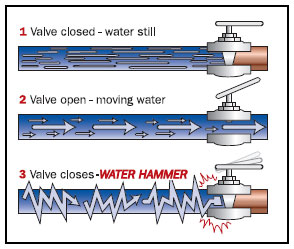
One method is to use a stud finder. A stud finder is a tool that can detect the location of studs, or the framing members, behind the drywall. Pipes are often run along the studs, so by finding the location of the studs, you can also determine the likely location of the pipes.
Another method is to tap on the wall and listen for a dull or hollow sound. Loose pipes will often make a rattling noise when they are tapped, whereas tight pipes will produce a solid sound. This method can be useful for locating the general area where the loose pipe is located.
A third method is to use a number of pipe location tools which are specifically designed to detect the location of pipes within walls. This collection of tools includes an electronic charge running through the pipe that emits a signal that is picked up by a sensor that’s run along the surface of the wall, which can help to locate the position of pipes with reasonable accuracy. Some listening devices can also help.
It’s important to note that it might be difficult to locate the exact spot where the pipe is loose, it’s recommended to hire a professional plumber to help you locate the problem and fix it.
Five ways to find water hammer in a stud wall.
In an earlier post we asked, “Do Hot and cold water pipes get water hammer?” Determining the location of loose pipes that cause water hammer in a stud wall can be challenging, as the pipes are typically hidden behind drywall or other wall coverings. However, there are several methods that can be used to locate the problem area:

- Sound: One of the most common ways to locate loose pipes is by listening for the sound of water hammer. This is the banging or knocking sound that occurs when a valve or faucet is quickly closed.
- Visual Inspection: If possible, removing a section of drywall or other wall covering in the area where the sound is heard can reveal the location of the pipes. You can also look for signs of water damage or staining on the wall or ceiling.
- Using a stud finder: A stud finder can be used to locate the studs behind the drywall, which will give you an idea of where the pipes are located.
- Tracer wire: If you have access to the attic or crawl space, you can trace the pipes with a tracer wire, which is a wire that is attached to the pipe and can be followed through the wall.
- Hiring a plumber: If you are unable to locate the problem area or are unsure about the best course of action, it is recommended to consult a plumber, who will have the knowledge and tools to locate the loose pipes and make necessary repairs.
World Water Day 2023. Four Ways to maintain our Water Supply
March 22nd 2023 is World Water Day.

G’day, it’s Dave Conroy, the Lone Drainer here to tell you all about World Water Day. This special day is celebrated every year on March 22nd, and it’s all about raising awareness for the importance of freshwater and advocating for sustainable management of this precious resource.
You see, water is essential for all life on Earth, and yet many people around the world still don’t have access to clean and safe water. Plus, with climate change and other environmental pressures, the future of freshwater is becoming increasingly uncertain.
That’s why World Water Day is so important. It’s a chance for people all over the world to come together and take action to protect our water resources. From conserving water in our daily lives to supporting policies that promote sustainable water management, there are many things we can do to make a difference.
To do our part to protect this vital resource, and remember that every drop counts, here are four things that can help maintain our water supply:
- Conserving water: One of the most effective ways to maintain our water supply is to use water more efficiently and avoid wasting it. This can be done by fixing leaks, taking shorter showers, using water-efficient appliances, and reducing outdoor water use (such as watering lawns and gardens only when necessary).
- Protecting water sources: Another important step is to protect the sources of our freshwater, such as lakes, rivers, and aquifers. This can be done by preventing pollution, reducing runoff from agricultural and urban areas, and minimizing the impact of industrial activities.
- Investing in infrastructure: To ensure that we have a reliable supply of clean water, it’s essential to invest in infrastructure that can capture, store, and treat water effectively. This can include building new dams, improving water treatment plants, and upgrading pipes and other water delivery systems.
- Supporting sustainable policies: Finally, it’s important to support Federal, State or Local government policies that promote sustainable water management, such as regulations that limit water use in times of drought or encourage the use of water-efficient technologies. By working together to protect and manage our water resources, we can help ensure that future generations have access to the water they need.
World Plumbing Day 2023! Seven tips from your plumber
Saturday, March 11th 2023 is World Plumbing Day.
Plumbing is something we all take for granted. World Plumbing Day is the day to thank your plumber as you brush your teeth, flush your toilet and have a hot shower.
We don’t pay any attention to our plumbing unless, its not working. So spare a thought for your plumber who is on standby to help you. Why not put his name and telephone number into your mobile phone, Just in case!
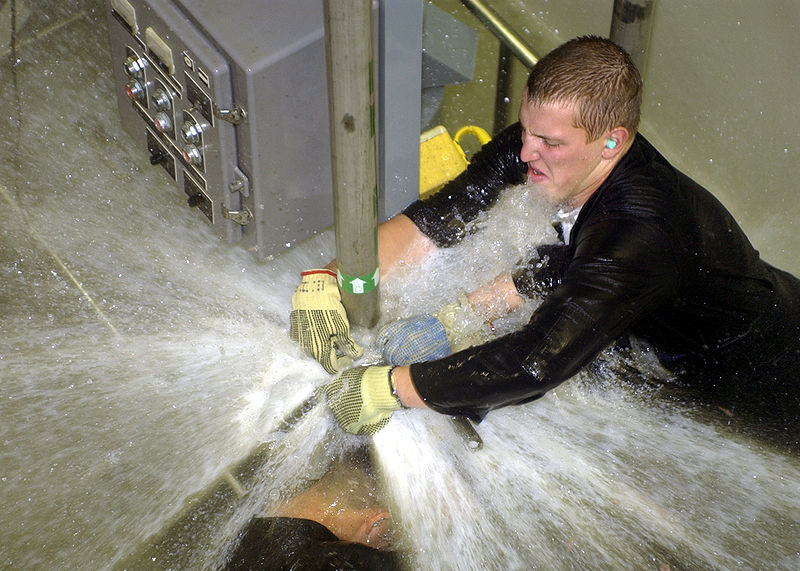
Here are 7 easy plumbing tips to help around your home
- Know where your main water shut-off valve is: In case of a plumbing emergency (like a burst pipe), it’s important to know where your main shut-off valve is so you can turn off the water supply to your home. Bonus tip: Check that it works!
- Know where your water heater is. Check it periodically to see it’s not leaking. Learn how to turn it off and back on again. Bonus tip: Know if it’s heated by gas or electricity.
- Don’t pour grease or cooking oil down your drains: Grease and oil can build up in your pipes and cause blocked drains, it’s important to dispose of them properly. Use a drain strainer in the sink to catch scraps of food.
- Keep a sink plunger in your home. Know how to use it!
- Check for leaks: Regularly check for leaks under kitchen sinks and vanity basins. If you see signs of water, have your plumber repair them as soon as possible to prevent water damage. Bonus tip: Flexible water connections have become very common in Australian homes. Some Home insurance companies insist homeowners check them regularly and have your plumber change them periodically. When they burst, they cause a lot of water damage very fast. (See Tip #1)
- Don’t flush anything other than toilet paper: Flushing things like “flushable” wipes, sanitary products, or paper towels will block your drains.
- Leaking toilet cisterns can waste a lot of water. Know how to turn your cistern on and off until its fixed. Bonus tip: If you’re desperate, you can flush your toilet with a bucket of water.
Make sure you get a professional for complex plumbing problems. While some plumbing repairs can be undertaken by a competent home owner, more complex tasks like installing a new water heater or fixing a concealed leak should be left to a professional plumber to ensure they’re done properly.
Do Hot and Cold Pipes get Water Hammer?
Water hammer can occur in both hot and cold water pipes. It’s caused by a sudden change in the velocity of water flow, like when a valve or faucet is quickly closed. This sudden change in velocity can cause a pressure wave to travel through the pipe, creating the banging or knocking sound that is characteristic of water hammer.
The main cause of water hammer is water pressure that is too high, which causes the water to move too quickly through the pipes. This can happen in both hot and cold water pipes, and can be caused by a variety of factors such as worn out valves, loose pipe connections, or improper pipe installation.

In some cases, the problem is more likely to occur in hot water pipes because hot water is less dense than cold water, and therefore is more susceptible to changes in velocity. However, it is possible for water hammer to occur in both hot and cold water pipes, so it’s important to address the issue as soon as it is detected.
Read our earlier post What is Water Hammer and How to Stop It here
Super Bowl 2023 Flush with Excitement.
The Kansas City Chiefs defeated the Philadelphia Eagles 38-35 in Super Bowl 57 at State Farm Stadium in Glendale Arizona on Monday morning Sydney time. It was the team’s second title in four seasons. Now Aussies Jordan Mailata an AFL player and punter Arryn Siposs a Rugy league man, made Australian sporting history when they played for Philadelphia. 🙁
Personally, apart from my son going to a game at the stadium when he was studying at NAU Northern Arizona University in 2019, I know little about the contest other than to say the Chiefs star Quarterback Patrick Mahomes apparently won the game after his team was behind 24-14 at half time.

And its the half time break that gets my interest! Specifically, toilet flushing at half time.
In a post from Super Bowl 2016, I wrote that the amount of water used in toilet flushing during the Super Bowl half time break is the same volume that would flow over Niagara Falls in seven minutes.
In doing some research on the topic, anecdotally, it is often joked that there is a Super Bowl flush that occurs during the halftime break, as many viewers may use the bathroom at the same time. However, there is no reliable data to support the claim.
In fact, some experts have suggested that the idea of a simultaneous flush causing water system issues is a myth, as modern water systems are designed to handle large surges in demand. While it is possible that water demand may increase during the halftime break or the Super Bowl flush, the impact on water infrastructure is likely to be minimal.
Our local Sydney news reporting on the Super Bowl reckon there are now more Australians watching that game than the Melbourne Cup.
Given Super Bowl lasts three and a half hours and, The Melbourne Cup lasts three and a half minutes, the halftime Super Bowl flush might be a thing.
What do you reckon?
What is Water Hammer and How to Stop It!
Water hammer, also known as hydraulic shock, is a banging or knocking sound that can occur in pipes when a valve, a tap or faucet is quickly closed. The banging noise and vibrations from water hammer can be felt throughout a house and, in multi-storey buildings, because the water pipes pass through and serve every level, banging can be heard on building levels far from the source of the water hammer. It can be caused by a variety of factors, including high water pressure, improper pipe installation, or worn out valves. Some causes include, the fitting of a new dishwasher or clothes washing machine, or fast closing mixer style taps that shut down or stop the water flow quickly.

Stopping water hammer can be challenging, as it often requires identifying the root cause of the issue and then implementing a solution. Some common solutions include installing water hammer arrestors, which are devices that absorb the shock of rapidly moving water, replacing worn out valves, or adjusting the water pressure.
In some cases, the solution may be as simple as tightening loose pipe connections or securing loose pipes.
However, it is always recommended to consult a plumber if you experience water hammer, as they can diagnose the issue and recommend an appropriate solution.
Don’t flush our drinking water?
As the summer of 2021 approaches, our water consumption is back on the menu.
Even though our borders have been closed to tourists and immigration and Australians returning home to sit out the pandemic have had their numbers slashed, our water consumption continues to rise.
During our current building boom, its not unusual for every new home to have at least two bathrooms with his and hers showers and hand basins’. And even the most modest Sydney home has at least two toilets.
Australians have been world leaders in water conservation with water saving taps and showers now the norm. If you didn’t know the dual-flush toilet cistern is an Australian invention.
Don’t be surprised but the dual flush toilet is still a big water user. Here in Sydney, with a few exceptions like urban domestic rainwater harvesting that uses rainwater to flush our household toilets and fill the washing machine, most of the water flushing our toilets is from our potable water supply. That’s our drinking water!
I grew up as one of six kids in a NSW country town of 13,000 people and our home in town had a metered water supply. But our family had a weekend shack on acres out of town where every drop of water we used was caught in rainwater tanks. The toilet was flushed with water piped from a dam over 300 metres from the house. It was a simple gravity system that piped muddy dam water across a paddock to the toilet cistern and flushing the toilet with the dam water left a brown stain on the toilet bowl.
There was a time when we didn’t go to the shack for a few weeks and what started as a simple toilet cistern leak that went unchecked, drained the farm dam down to a muddy sludge by our next visit. That weekend, as we flushed the toilet with our drinking water from the tank, I learned that our drinking water was way to precious to waste on flushing a toilet.
So, what does that mean here in Sydney?
Simply put, if you have even a slight toilet leak DO NOT IGNORE IT otherwise it will drain our dam.
Clean your gas room heater

Gas room Heater
Since June 25th 2021, we are being asked to stay at home with the latest COVID-19 outbreak.
Greater Sydney is settling into winter and it’s wet! So, if you have a gas room heater, now is the time to clean it!
Dust is the thing that diminishes the efficiency of a gas room heater. The simple thing to do is clean and vacuum the air filters and ensure the fans are turning freely.
Most heaters have a service manual that demonstrates how to dismantle, clean and reinstate the relevant parts.
Please remember Safety First.
If you don’t feel confident, call us on 02 9664 4990 for help or arrange for our gasfitters to do a gas heater health check.
Bathroom cleaning tip #2
We plumbers wash our hands 10 or more times a day.
The Coronavirus pandemic is making us all think about the transmission of germs and how the virus is transmitted on the surfaces we come in contact with. Any time we work in your bathroom we more than likely touch the hot and cold taps in your bath, shower or hand basin and the cold water tap to your toilet.
The tap supplying water to the toilet isn’t touched regularly, so, it has a reduced chance of transmission through touch. But, it is near the toilet so airborne germs are a concern.
The simple task of using the toilet and then wiping ourselves is something we all learned as kids, but, in researching this article I’m surprised to learn the number of different methods people use.
No matter how you do it, the first thing we all do is flush the toilet.
Before we wash our hands!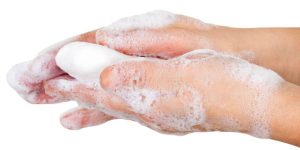
Alarm bells are ringing for you right now. As they should be!
But(t), let’s be practical.
Whether you have a plumber working in your bathroom or not, keep an atomiser spray bottle with a mix of water and disinfectant with an appropriate cleaning cloth in your bathroom. Spray the toilet flush button, the cistern lid, the toilet seat and lid and wipe them over thoroughly.
And if you’re keen to clean the entire bathroom, click here to see another of our easy cleaning tips.
Don’t do this in the bathroom!
During our Coronavirus work schedule, I’ve found some fun hints and tips about plumbing and health that are worth sharing.
How germs spread:
- on your toothbrush,
- your toilet seat,
- and the toilet flush button, are just a few examples.
How is water connected to my toilet cistern?
Many modern toilets have a concealed cistern. That’s the tank that holds the water that flushes the loo. Now, they do look fantastic and they do save water.
The small dual flush buttons are the access panel for the internal workings of the cistern. When they need maintenance, the only way to repair them is through that access panel.
The water tap is usually built into the wall and this one couldn’t be replaced without cutting into the wall behind.
Get into hot water this Winter!
With the winter season underway, its time to think about hot water.

Take 10 minutes to check on your water heater.
Is it gas or electric?
Check it’s location. Ensure that it’s not leaking on any of the pipes or connections.
Check the cold water control feed tap, usually on the bottom left of the heater. Make sure it turns off and back on.
If you have a storage tank, make sure you check the pressure relief valve is working correctly. And that it’s not leaking.
An efficient water heater will supply all the hot water your family will need this winter.
If you’re not sure, call me on 02 9664 4990!
Know your water heater #1
Hi, its Dave Conroy here from The Lone Drainer and Pronto.
As we approach the winter of 2020, my message for today is about hot water.
You need to know how to turn off the water supply to your water heater.
And most importantly, I want you to know what a temperature and pressure relief valve is.
This 1min 48 sec YouTube clip will show you how it’s done on a 50-litre heater. Yours may be different. If you would like to know more……Call me!
Plumbers bathroom cleaning tip #1
Some bathrooms are a little neglected; especially if there are boys in the house.
Like many among us, during Coronavirus isolation, I’ve taken the opportunity to catch up on a few old recipes, a stack of books and some cleaning. And, I feel sharing the following cleaning tip would save everyone some time.
You will need:
1. A can of the cheapest shaving cream you can find in Woolies or Coles.
2. 2 Old bath towels
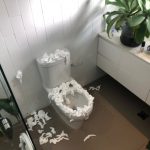
Spray the shaving cream on and around your toilet, including the floor.
Taking the toilet seat off would earn extra points.
Leave it to sit for 10-15 minutes.
Then, wipe off the excess with an old bath towel and some hot water and wipe over with the other towel.
I know you’ll be pleasantly surprised!
Why you need a sewer diagram
One of the handiest tools for a plumbing professional is a sewer service diagram. It’s a map of where the sewer pipes run within your home.
It’s easily obtainable, and you can get it from Sydney Water, reputable plumbing suppliers and, even your local plumber can get it for you.
It’s simply an A4 sheet that has an outline of your home, your property. It shows where all the pipes run within your home and how they connect to the sewer.
The sewer service diagram will make it easier for your plumber to get into your sewer pipes to clear your blocked drain. And if you are planning a preventative maintenance program, it shows points of access where we can get into your pipes with a minimum of fuss.
In the long term it will save you money.
So if you have repeat problems with your sewer pipes, get a sewer diagram and keep it handy.
Can Coronavirus be spread through wastewater pipes in a home or hospital?
Sydney April 15th 2020
“Staying connected” has become a part of our language lately.
Did you know we are all connected through the wastewater pipes in our homes?
Whether you live in a single level detached home or a multi-storey building, all our plumbing fittings drain into the same city sewer. That’s your shower, bath, basin, your WC, kitchen sink, washing machine, laundry tubs and floor drains.
A study showed the 2003 SARS virus spread through the plumbing system of a HongKong residential complex whose residents had 300 confirmed cases and 42 deaths- about 1/6th of the infections and fatalities on the entire island.
Our Australian Standards state “all plumbing fixtures must have a working trap or water seal”. That is, the S-bend at the outlet of the fixtures should have water sitting in them OR flowing through them.

Regularly we’re asked to investigate “a sewer smell” in a bathroom or laundry that is nothing more than a dry trap.
But, its allowing smells and bacteria to come from the wastewater and sewer pipes into your room.
Hypothetically, if an infected neighbour flushed their toilet and that wastewater entered a pipe you’re connected to, then bacteria could pass through a dry trap and enter your bathroom.
While person-to-person and surface-to-person is the most common means of spreading Coronavirus, I want you to be aware that any open or dry traps may allow contaminated droplets into your space.
So:
• Do not ignore unexplained foul smells in bathrooms, kitchens or washing areas.
• Ensure all your sink traps and S-bends have water in them.
• Run water into all tubs and showers for a few seconds in the morning and evening, paying particular attention to floor drains in bathrooms and laundries.
• If the wastewater pipework from a toilet, sink or other household appliance appears to be disconnected or open, seal it immediately.
• If you find any crack or leak in pipework, seal it with strong tape.
• Encourage your facilities managers to monitor the wastewater system performance of your building, looking out for things such as drainage overflows or sewer smells.
If you have any questions about this, I invite you to call me.
Be careful what you flush down the toilet!
Sydney March 31st 2020
As we work through COVID-19, our work, social distancing, hygiene and consumption habits are being challenged daily.
The run on toilet paper in our supermarkets has left me bewildered.
I had to see it for my own eyes. And did!
The take away for me is that those who couldn’t purchase their normal supply have resorted to buying and using baby wipes, paper towels and facial tissues. Please remember they’re not for flushing down the toilet because they don’t break down and can block your drains!
If you’re desperate for toilet paper we have a few boxes at our Coogee office.
Sydney Water restrictions
Sydney November 29th 2019
The continuing drought is having an effect on all Australians. The dry conditions have added bushfires to that list, and the forecast is for a hot summer.
Here in greater Sydney we sometimes forget about our country cousins, the farmers that produce most of our food supplies, and how the lack of rainfall is affecting them. But that is about to change.
Sydney dam levels have dropped below 46% capacity, and with our growing population, we’ve got to slow down on our water usage. Thankfully we have a desalination plant to help out. It may add a nominal charge to our water bills, but I believe that’s a small price to pay.
Sydney Water has announced that from Tuesday, December 10th 2019 greater Sydney will move to Level 2 water restrictions. For householders, it means there will be a few more rules about how and when we can water our gardens, wash our cars and generally use water around our homes.
We can all save water!
Our business has to apply for a water use exemption. The exemption doesn’t mean we can waste water. It means being more thoughtful about how to use it.
